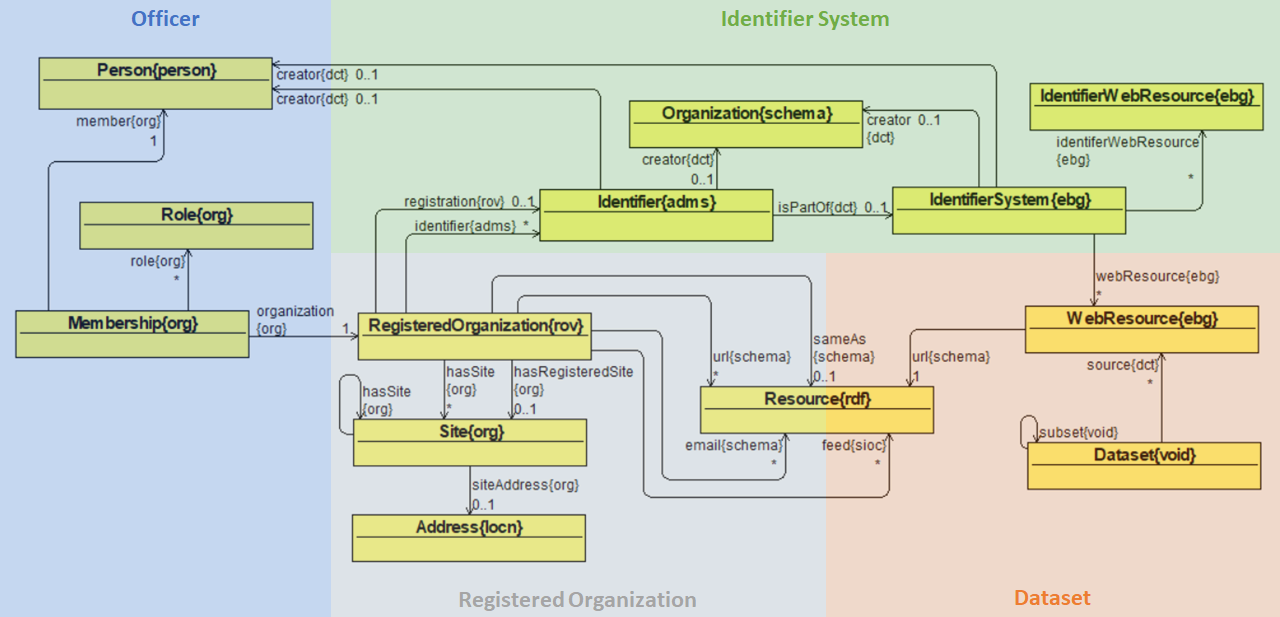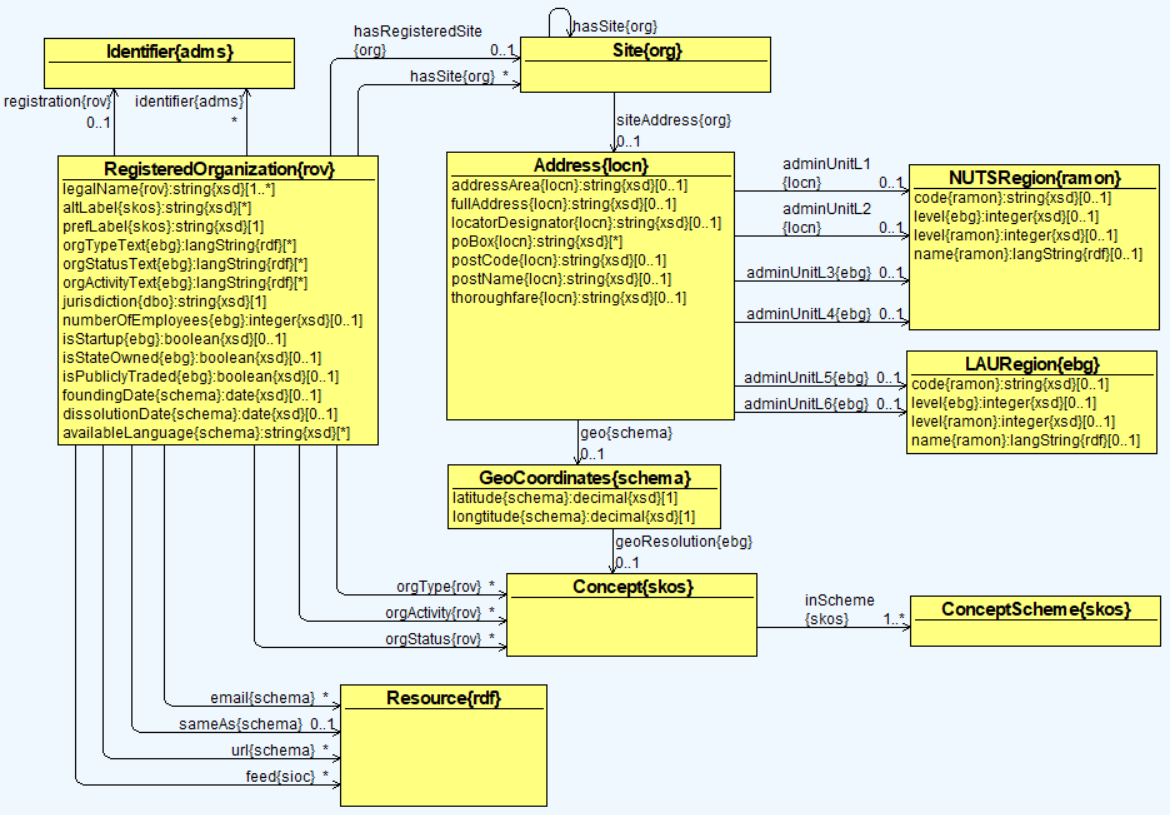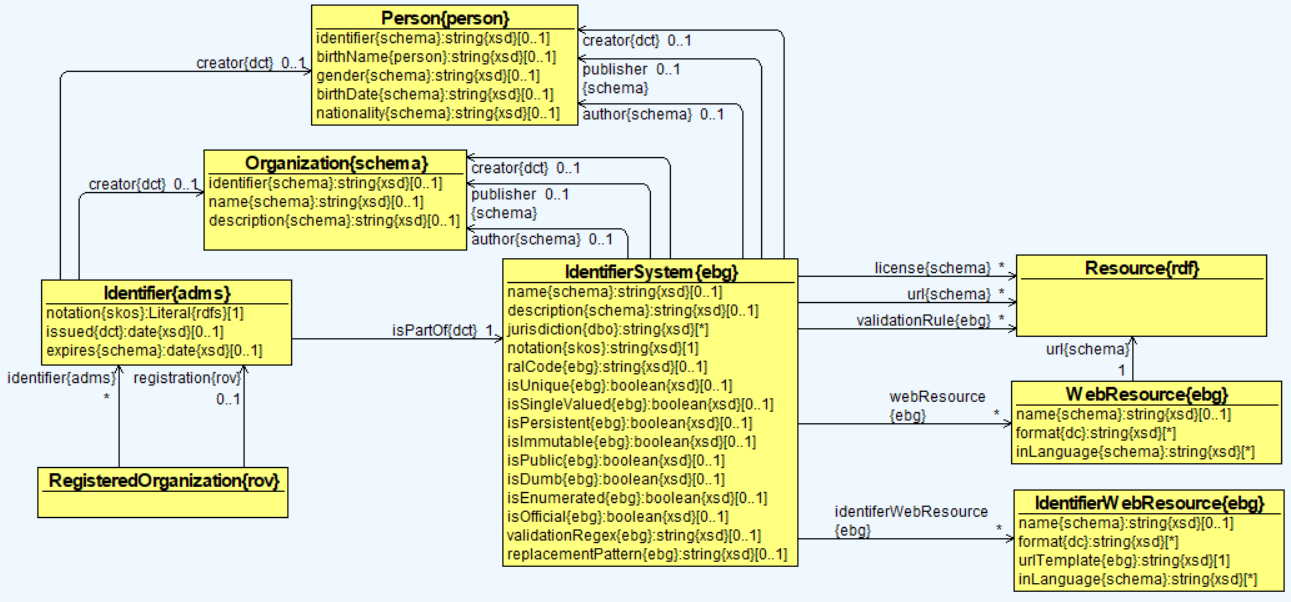Metadata
- URI
http://data.businessgraph.io/ontology#- Publisher(s)
-
The euBusinessGraph Project
- Creator(s)
-
Ahmet Soylu
(ahmet.soylu@sintef.no)
Bjørn Marius von Zernichow (BjornMarius.vonZernichow@sintef.no)
Boyan Simeonov (boyan.simeonov@ontotext.com)
Brian Elvesæter (brian.elvesater@sintef.no)
Chris Taggart (chris.taggart@opencorporates.com)
David Norheim (david.norheim@brreg.no)
Dumitru Roman (dumitru.roman@sintef.no)
Fredrik Seehusen
Javier Paniagua (paniagua@spaziodati.eu)
Tatiana Tarasova
Vladimir Alexiev (vladimir.alexiev@ontotext.com)
- Contributor(s)
-
The euBusinessGraph Consortium
- Created
- 2017-07-11
- Modified
- 2020-02-11
- Version Information
- 1.4.1
- License
- https://opendatacommons.org/licenses/by/
- Ontology RDF
- RDF (turtle)
- Code Repository
- https://github.com/euBusinessGraph/eubg-data
Description
The euBusinessGraph (ebg:) ontology represents companies, type/status/economic classification, addresses, identifiers, company officers (e.g., directors and CEOs), and dataset offerings.
It uses schema:domainIncludes/rangeIncludes (which are polymorphic) to describe which properties are applicable to a class,
rather than rdfs:domain/range (which are monomorphic) to prescribe what classes must be applied to each node using a property.
We find that this enables more flexible reuse and combination of different ontologies.
We reuse the following ontologies and nomenclatures, and extend them where appropriate with classes and properties:
-
W3C Org, W3C RegOrg (basic company data),
-
W3C Time (officer membership),
-
W3C Locn (addresses),
-
schema.org (domain/rangeIncludes and various properties)
-
DBpedia ontology (jurisdiction)
-
NGEO and Spatial (NUTS administrative divisions)
-
ADMS (identifiers),
-
FOAF, SIOC (blog posts),
-
RAMON, SKOS (NACE economic classifications and various nomenclatures),
-
VOID (dataset descriptions).
This is only a reference. See more detail in the EBG Semantic Model google document, which includes an informative description of classes and properties, gives examples and data provider rules, and provides more schema and instance diagrams.
Table of Contents
Overview
The figure below gives an overview of the ontology, depicting the main classes and their relationships (i.e., object properties). The ontology covers the following areas:
-
Registered Organization: To represent a legal company.
-
Identifier System: To represent Identifier Systems. A company can have several Identifiers belonging to different Identifier Systems.
-
Officer: To represent associated company officers, e.g., directors.
-
Dataset: To represent information about datasets that are offered by company data providers.

Registered Organization (company)
Registered organizations are the main entities for which information is captured in the euBusinessGraph ontology. The ontology is not concerned with unregistered informal groups. Registered organizations gain legal entity status by the act of registration and are distinct from the broader concept of organizations, groups or, in some jurisdictions, sole traders. The figure below shows the classes and properties for representing core data about a registered organization.

Identifier System
Mechanisms to identify companies in various data sources are essential in integration of data about companies across data sources. A proper understanding of what kind of systems of identifiers can be used for companies is thus necessary in this context. We analyzed various types of identifiers commonly used for companies and collected various properties of the systems they are part of. We modelled identifiers and identifier systems explicitly in the ontology as shown in thew figure below.

Officer
We use the membership model of the W3C Organization Ontology in a straightforward way to represent officer data as shown in the figure below.

Dataset Descriptions
Data consumers need to know how many companies are included in a data provider dataset, from which jurisdictions, and what depth of data is included (e.g., which properties, addresses with what geo resolution, etc.). We thus need to express both metadata about the dataset itself, and fine-grained statistics about the content of a dataset, as shown in the figure below.
